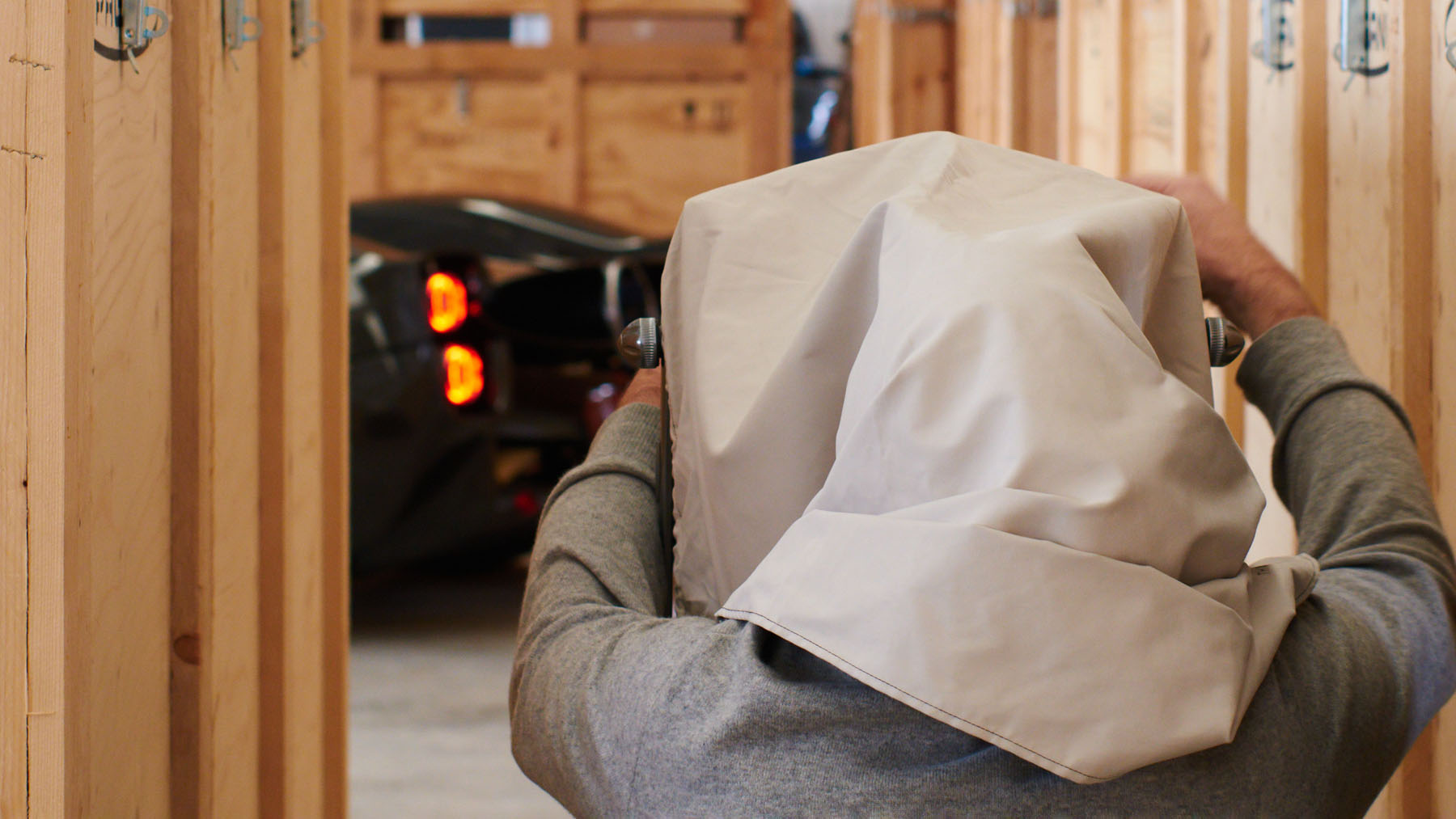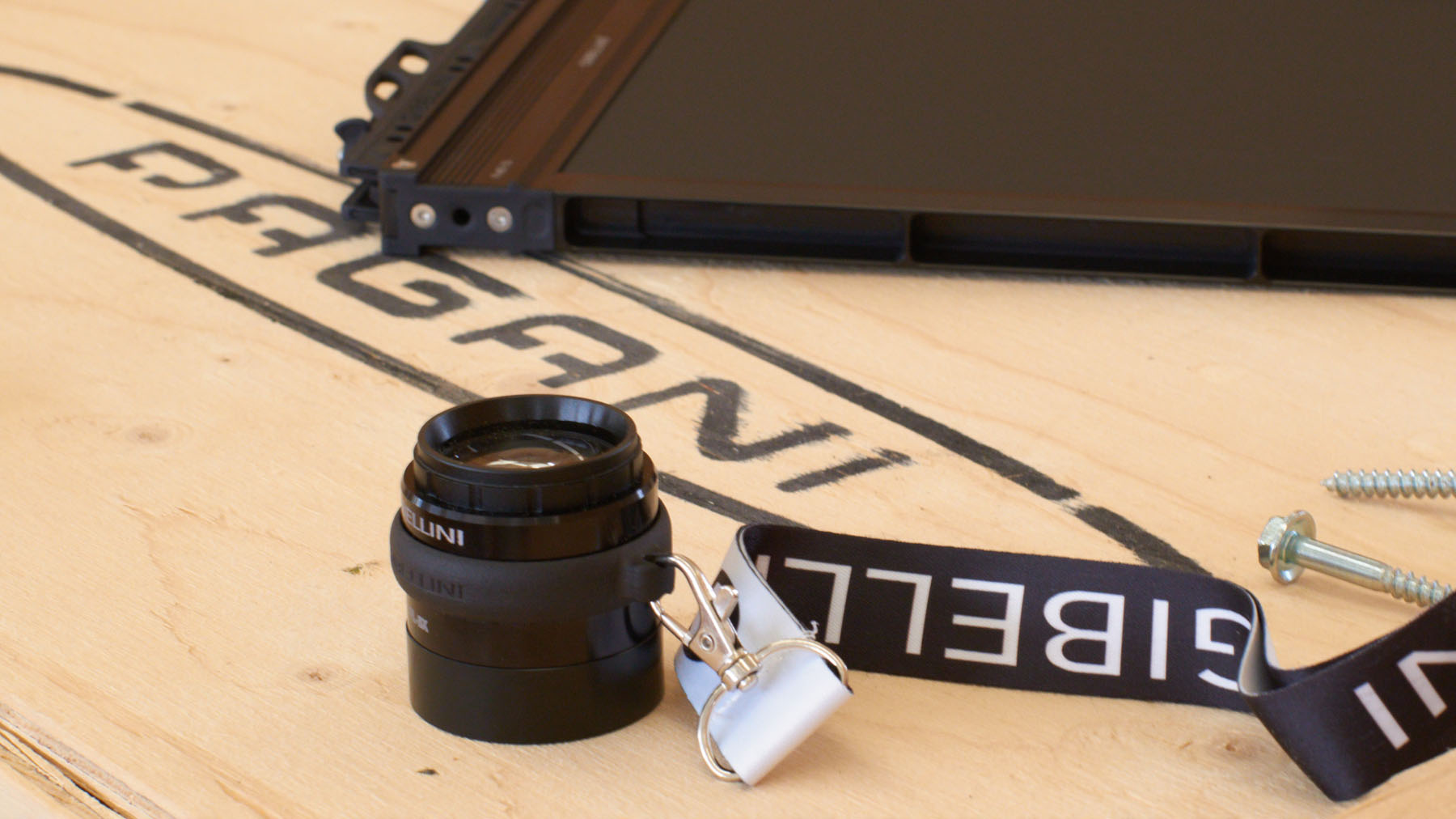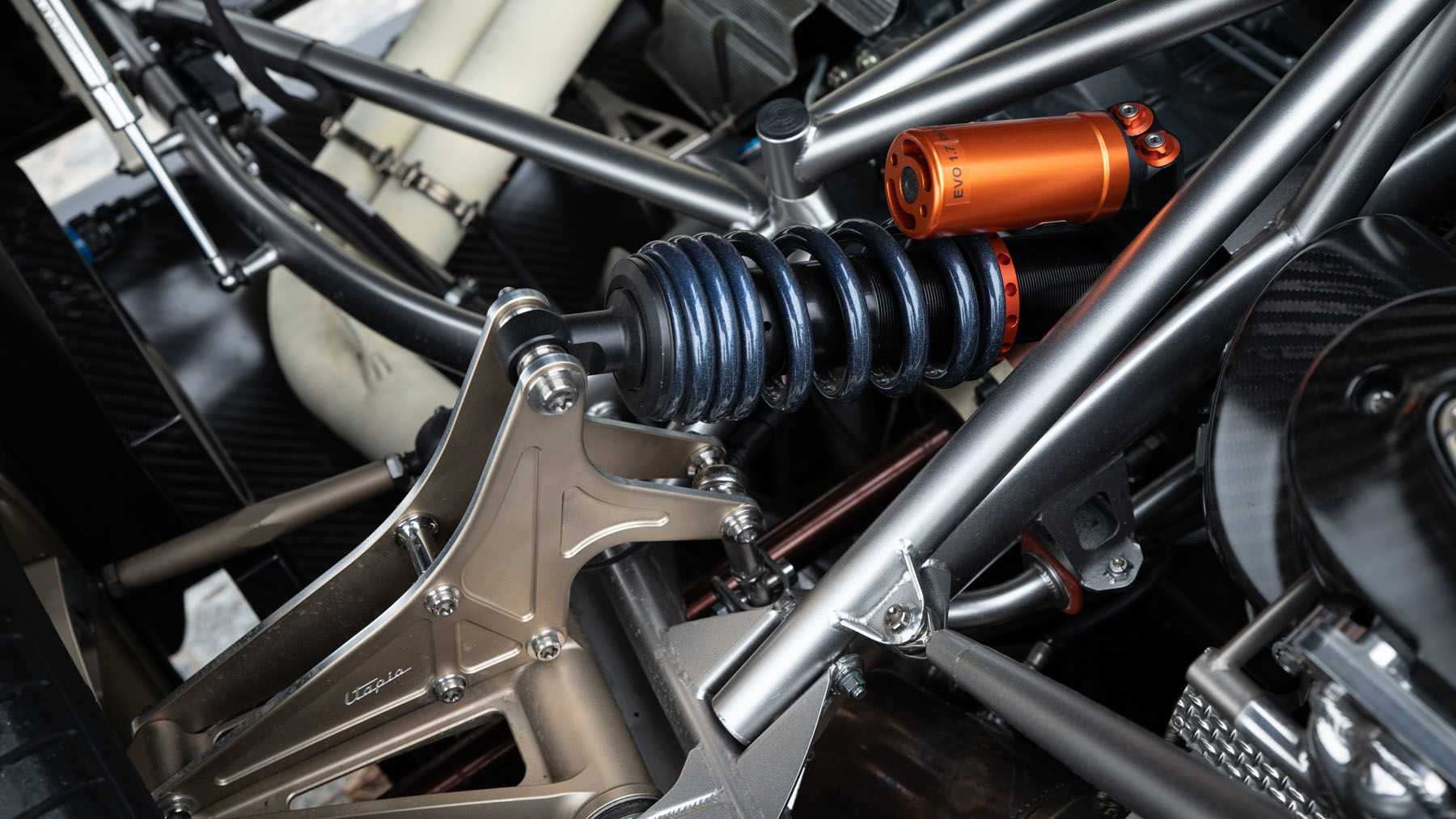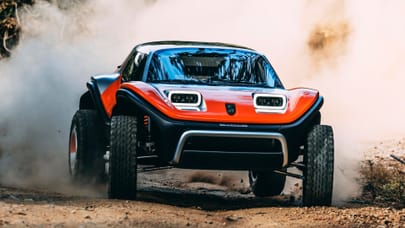
A closer look at the Pagani Utopia... using an exquisite analogue camera
The new Pagani is a staunchly analogue V12 hypercar. Only fitting then, that we shoot it with a camera that feels the same way
Six photos. That’s Tom Salt’s output today. Six near-silent precision clicks of the shutter in this outlandish camera’s lens. Between each shot is a complex set of actions to lightproof the gigantic eight-by-10-inch negative, and swap its film holder for a fresh one. Every photo takes more than an hour of inch-fussy manoeuvring of car and camera, meticulous composition, focus and light metering. Every shadow and reflection has to be managed, any superfluous piece of litter and distraction has to be physically cleansed from the scene. No digital retouching is allowed.
There are electric SUVs that accelerate as fast as a Pagani Utopia. No fuss. But they don’t have the charisma of a 6.0-litre V12 or the involvement of a manual transmission. Analogue isn’t dead. Not yet, not ever. And just as streaming never quite replaced vinyl and the pdf never quite replaced calligraphy, digital photography hasn’t quite replaced film.
Photography: Tom Salt
The reason should be obvious. Put in the hard yards and the results from a large-format film camera can be spectacular. Even with the muffling effect of magazine and web publishing, they show mesmerising detail and a gorgeously luminous tonal quality. You could jump into these prints like a pool.
But that’s just the start. The optics of large-format cameras let the photographer control the depth of focus: Ansel Adams and Group f/64 closed the lens right down like a pinhole camera to get everything sharp, whereas flinging open the aperture will lift the subject sharply out of cloud-soft surroundings. The vertical and lateral movements of the bellows-mounted lens allow perspective control to prevent keystoning, the tapering effect looking up at buildings. Of course our phone cams have digital keystone correction and a bogus ‘portrait mode’ that (mostly) recognises a face and blurs the background. But they’re so not the same. Besides, the tilt function of the lens means the photographer can twist the pane of focus, keeping sharpness through an object that diagonally recedes into the distance. It all bestows immense artistic freedom.
Alessandro Gibellini trained as a civil engineer, but one day his dad gave him a film camera, and he was hooked. He began to experiment with larger film formats, and soon built a view camera, promoting his version of this 170-year-old apparatus via social media – oh the irony. His engineer’s inclinations led him away from the traditional hardwood frames into titanium and aluminium alloys, and even carbon fibre. It makes them more rigid, obviously a vital characteristic with precision optics. He also wanted to make every component, every bracket and arm and control knob, a thing of beauty in itself. His little factory is in a hillside village just south of Modena. I must have passed it, oblivious, dozens of times when road-testing Ferraris, Lamborghinis... and Paganis.
Although younger, Alessandro shares much in common with Horacio Pagani. Technocrat, artist, materials expert, entrepreneur, maker of functional objects imbued with beauty to the core. He was introduced to Horacio a few years ago by a supplier of metal parts to both firms. The idea brewed up to do a Pagani version of the Gibellini camera. So was born the GP810HP.
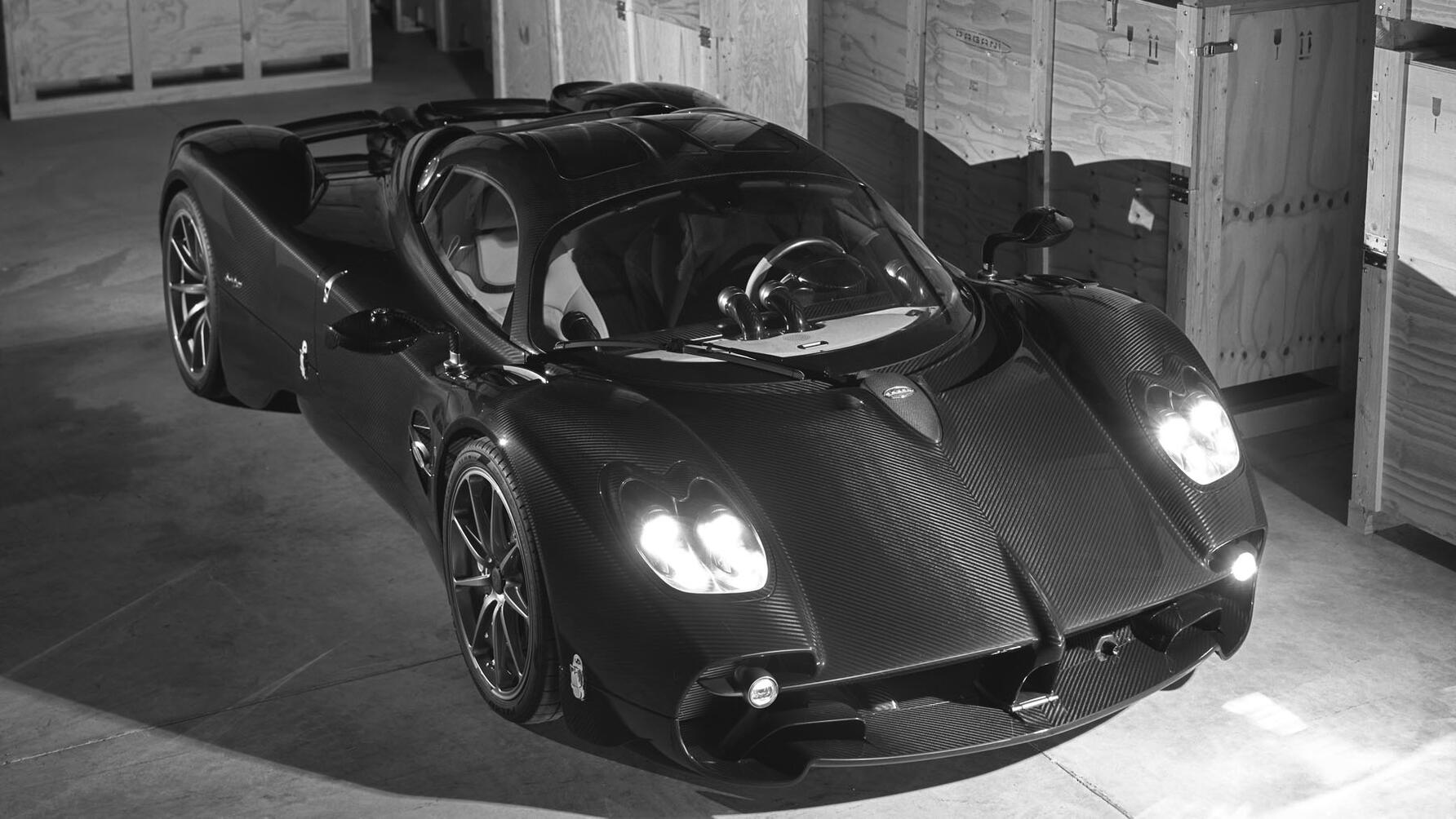
Not just a rebadge job, mind. Pagani’s designers made changes to many of the moving parts, and added their own flourishes, including a big control knob tipped with their four-tailpipe motif. The camera comes with a leather bound carbon-fibre tripod and matching cases. Again, all very Pagani. The price is pretty Pagani too: £70,000. (Although Gibellini’s 3D printed cameras for education start at less than a grand.) About half the limited run has been reserved for Pagani car buyers. I’m told most of those actually have some intention of using it, and some idea how to. This isn’t a trophy piece for the corner of the sitting room. Or at least, not just that.
It’s an assembly of gorgeous parts, mostly milled from solid metals into strong, light arms like birds’ rib cages, and fluted controls and locking knobs. It operates with exquisite precision. Which all adds to the satisfaction of using it, but the real distinction is the process itself. In a view camera the lens casts its image on a removable ground-glass screen acting as a proxy for the film while you compose and focus. It’s not a very bright image, so you kill the ambient light by ducking under a lightproof cloth. Under there, you’re on your own. Is it too fanciful to compare that to being alone in a car on an empty road?
Except it’s slow. You’re working with an upside-down image on the glass. Tiny movements of the lens have a multiplied effect. You need a magnifying loupe to check focus. Move one aspect of the composition and everything else morphs too. Then you have to run around the scene with a light meter. Tom says it’s both physical and philosophical. He’s the man for this job. In the Nineties he spent three years as assistant to James Hedrich of preeminent Chicago architectural photography firm Hedrich-Blessing, favoured image makers to Frank Lloyd Wright, Ludwig Mies van der Rohe, Buckminster Fuller, Eero Saarinen and other modernist giants. He’d lug 17 flight cases of cameras and lights all over the US, spending evenings in hotel bathrooms, the doors taped up to lightproof them so he could load the film into its holders.
Tom came back to Britain and started photographing cars. He and I first worked together as the century turned, him shooting and me driving. We first came to this factory in May 2002 to test a then-new Zonda S. That day Tom shot with a Hasselblad, a miracle of convenience beside a bellows camera, but ridiculously cumbersome compared with the digital hardware and techniques that have since taken over his photography, as almost everyone else’s. Digital is simply faster on the ground. “Today’s shoot just made me realise how much leeway we now have,” he says. “It’s a completely different approach to get it right in camera versus patch it together afterwards. Analogue is way more honest and more of a craft.”
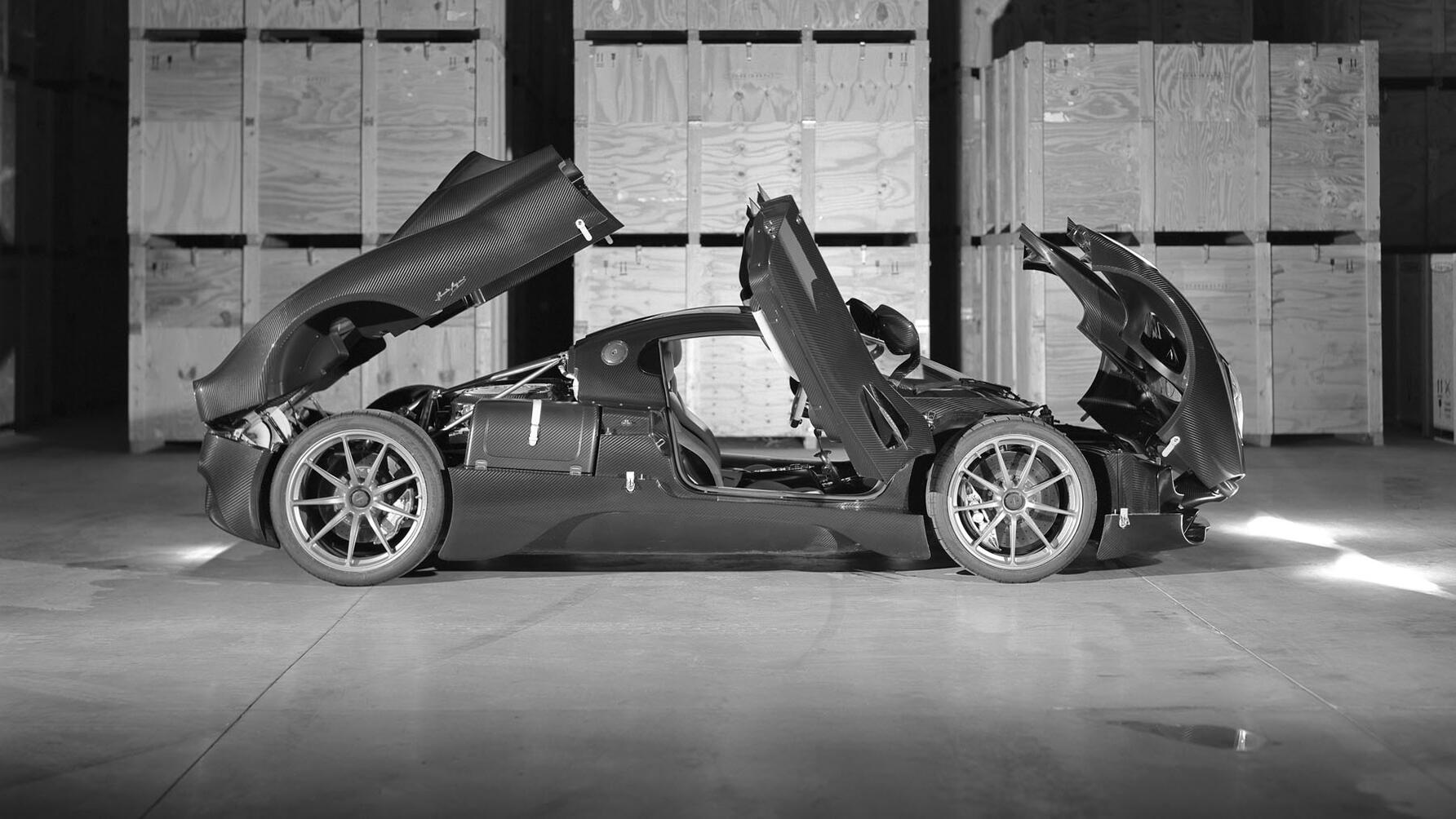
As the shoot in the warehouse labours onward, I’m back in the main factory with Horacio Pagani, maker of pinnacle analogue supercars. The Utopia follows the Pagani philosophy that every part, even the hidden ones, must be beautiful, first because that gives pleasure in itself but also because they often find it also improves their function. Except that Horacio, in his softly spoken way, always insists it isn’t his philosophy at all, but refers you to Leonardo da Vinci’s dictum: “Art and science are disciplines that must walk together hand in hand.”
After a morning of staring at the thing from all angles, I don’t need telling that the Utopia is indeed a machine of extraordinary aesthetics. Even if you find its form language a little over-ornate – although less so than the Huayra I’d say – it’s still impossible to not be overawed by its cohesion. Every tiny part harmonises. Nothing here is commonplace or borrowed. Look under the vast rear clamshell. Between the sculpted components it’s also obsessively tidy. Not a tube or wire interrupts the composition. This was Horacio’s manifesto from the start, with the Zonda, and it continued with the Huayra.
Top Gear
Newsletter
Thank you for subscribing to our newsletter. Look out for your regular round-up of news, reviews and offers in your inbox.
Get all the latest news, reviews and exclusives, direct to your inbox.
That and the megalithic V12. Plug-in hybrid drive has become almost the norm among hypercars. Horacio’s personal 918 lurks under a dustsheet next to where Tom is shooting – and yet... “I’m not a pro driver, but I have driven lots of other supercars. Once a car is more than 1,500kg the electronics make it a filtered experience. It’s artificial. Our cars aren’t for the week, for taking your child to school. They’re for the weekend. Our customers want a car that isn’t complicated, they want one that is close to you and has a connection with you. That was what made the Zonda magical.” Oh yes. That springtime experience back in 2002 remains engraved on my mind. For its era it was almost preposterously powerful, its intimidation boosted by its otherworldly looks, and yet driving it turned out to be charming and friendly as well as searingly exciting. If the Utopia captures that, it’ll be another triumph. Its bespoke 852bhp twin-turbo V12 from AMG and his own carbo-titanium structure help keep kerbweight under 1,400kg, so it’s in with every chance.
The Utopia’s ‘unfiltered’ experience means no four-wheel drive, no four-wheel steering, no active roll control. It has the option of a manual transmission and 70 per cent of buyers go that way. Most significantly, it has no hybrid drive. Pagani tells me that AMG offered him, instead of the V12, a V8 with a plug-in hybrid system and four-wheel drive. “It was 1,000 horsepower, and it would have been easier to homologate worldwide. But it would have added 350 to 400kg. Our customers want a V12 and no hybrid.” So they get it.
For the Utopia, Pagani has developed about 40 new types of carbon-fibre composites, with different properties for their particular task throughout the car. They don’t need to be dressed or trimmed, saving even more weight. That’s obvious in the cabin. The shift gate and linkage for the seven-speed manual transmission is a skeletal work of art. The steering wheel begins life as a 30kg aluminium block, machined to a 2.5kg solid item that won’t flex or vibrate. The dials have the look of chronographs. There is no central touch screen. Horacio thinks they’re a distraction (can’t disagree), and they date fast. He wants the car to be timeless.
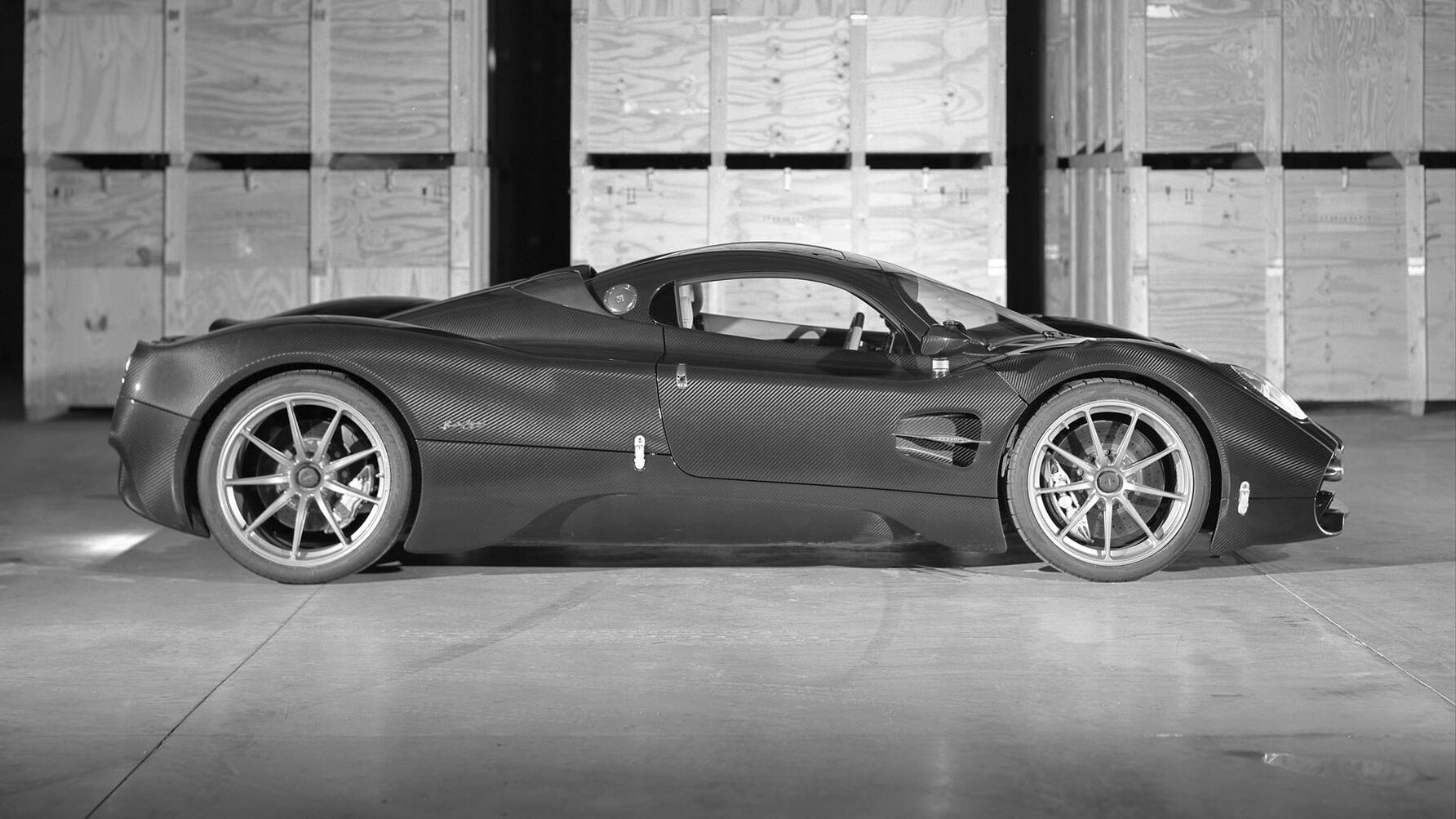
Which is why he also wanted a relatively clean and organic exterior, free of spoilers and wings. Airflow through the car was a focus of extensive CFD and tunnel testing. In the Huayra, Pagani introduced movable flaps on the nose and tail. These lift and drop, to affect downforce and drag. The left and right sides are independent, producing variable lateral aerodynamic force for corners, and countering roll. It was the first car in the world to have that capability. For the Utopia, the moving aero surfaces appear only at the back. They make up the upper section of the Pagani signature oval shape that loops around the exhaust pipes with the tail-lights at its pointed ends, so they’re more effective as air can pass under as well as over them. With the Huayra’s flaps, air could pass only over. Instead of moving surfaces at the nose, the front suspension rises and falls, changing the body’s angle of attack to balance up the aero forces. This all demands super complex electronic control, developed in-house by Horacio’s young and empowered team.
The Utopia’s 6.0-litre twin-turbo engine is increasingly unlike any other. AMG no longer sells a car with a V12, and the one used by Maybach obviously needs to be a wholly different animal. Pagani’s revs to 6,700rpm and makes a bewildering 811lb ft of torque. The transmission is transversally mounted, so its weight is further forward than a longitudinal unit. That helps handling.
Even so, disable the ESP in your analogue hypercar and you can no doubt spin off. So it is with analogue photography. You’re denied the ESP-like comfort of immediately checking every shot on the screen. After a day’s shooting, Tom and Alessandro process the film. Disaster. We have a spin. Every sheet of film turns out uniformly black – it’s negative remember, so this is previous exposure to light. It’s not like the light leak in a camera or processing tank, which produces streaks from an edge. We wrack our brains. Most likely someone in the setting up or transport opened the lightproof film package, not realising what was in there. Whatever. Waste of a day.
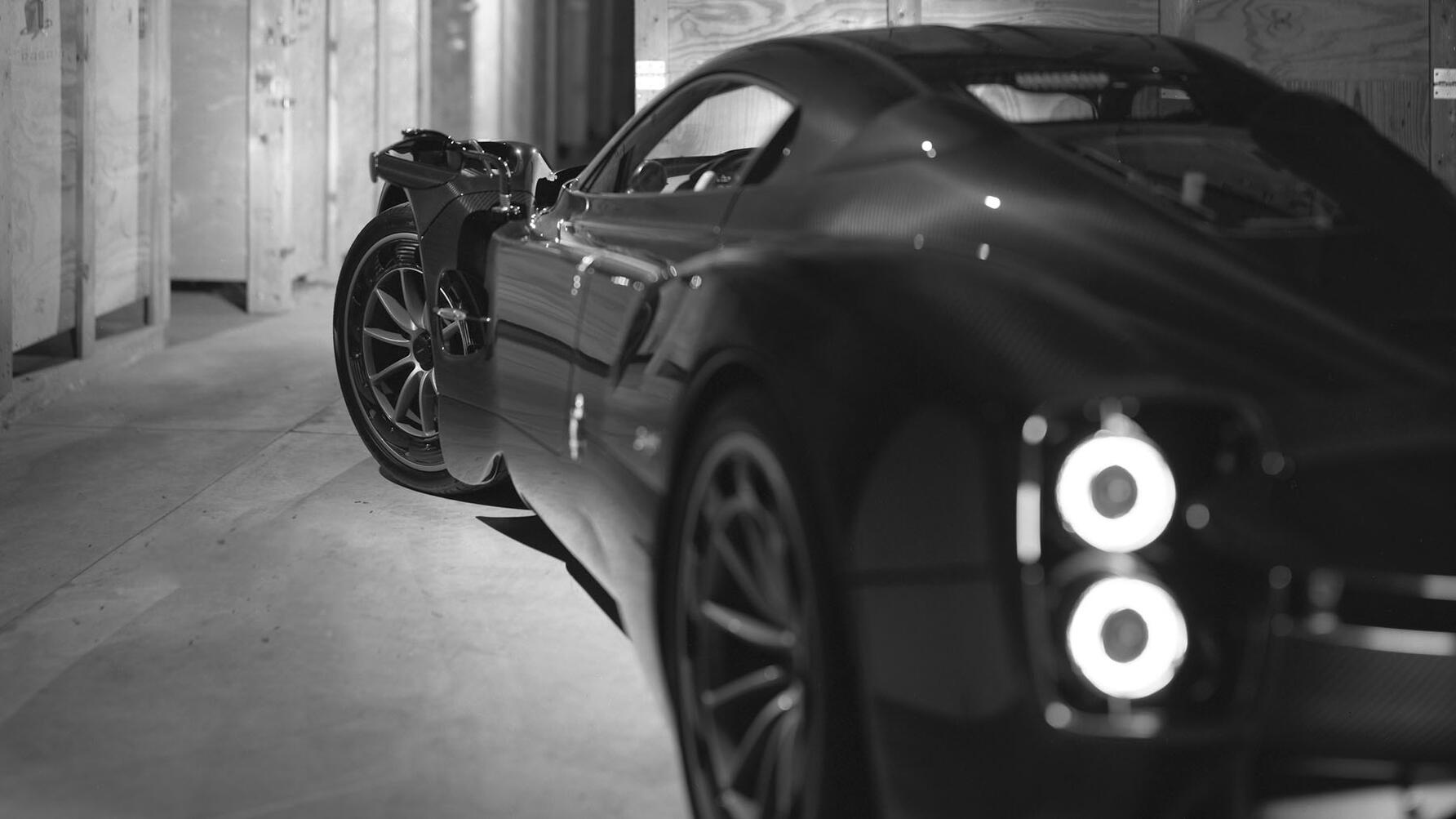
So it’s an all-night repeat of the shoot, using borrowed lights instead of the warehouse window daylight. And through it all the magic of film comes good. Under the direct electric light, the extraordinary detail resolution of large format makes the car’s carbon fibre zing, enlivening its curves yet more. Tom had shot backups with his digital Nikon, later fessing up to a notion of printing them with fake film borders. Then the night shot negatives emerged from their processing chemicals and it was clear that wouldn’t have washed. “There is a real quality to the 8x10 that’s hard to replicate. I think it’s mostly in the focus but also something about the formality.”
Today’s bitter experience has only entrenched what progress means. “For work, under pressure, I wouldn’t go back,” says Tom. “There’s no time for it any longer. Digital offers so much flexibility.” Even so, “Given time shooting a subject of my own choosing, I’d still go analogue. I do miss it. The ground glass experience is unmatched.”
Guess that’s exactly what Horacio is saying about his weekend hypercars.
Trending this week
- Car Review
BMW iX3




